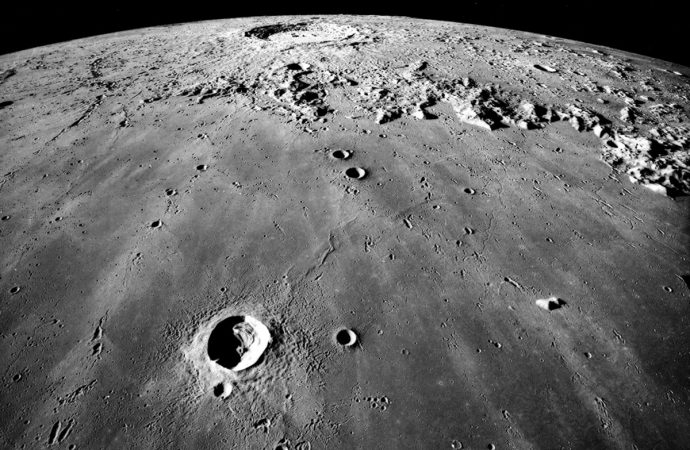Atmosphere is long gone, but there are signs of it being there.
If you travelled back in time 3.5 billion years and looked up at the night sky, you would have seen an atmosphere around the moon. Though today it retains only a few tenuous wisps of atmosphere, new calculations show that massive volcanic eruptions released enough hot gas to create one that took 70 million years to leak away.
Astronomers had thought the moon was dry as a bone, yet we recently learned that the magma ocean covering the newborn moon 4.5 billion years ago released hot vapours of sodium and silica that formed a short-lived atmosphere. Now it seems a second lunar atmosphere developed 3.5 billion years ago as a result of eruptions flooding a large crater to form Mare Imbrium, a lava plain on the near side of the moon.
Starting nearly a decade ago, studies using sensitive new instruments revealed volatile material embedded in lunar volcanic glass collected by Apollo astronauts. The glass came from the dark lunar basins and hinted that the large volcanic eruptions that formed them between 3.8 and 3.1 billion years ago also emitted vast amounts of gas.
Dune on the moon
Now Debra Needham and David Kring at the Lunar and Planetary Institute in Houston, Texas, have calculated these emissions based on the estimated volumes of the lava flows. The largest emission was the roughly 10 trillion tonnes of gas that erupted along with the 5.3 million cubic kilometres of lava that filled the Imbrium basin. That would have raised lunar air pressure to about 1 per cent that of modern Earth, or 1.5 times the density of today’s Martian atmosphere.
“If you had any temperature gradient on the lunar surface, there would have been wind,” Needham says. With dust on the surface and enough wind to transport it, she adds, it could have been like “Dune on the moon”. But within 70 million years, all the atmospheric gas escaped or froze out in the polar regions, and because it all happened so long ago, no evidence of these winds would remain.
James Day at the Scripps Institution of Oceanography in California says this atmosphere formation process could account for the distribution of water and other volatiles on the surface of the moon and their loss from its interior. It could also help us understand how planetary atmospheres form, he says.
Source: New Scientist

































Leave a Comment
You must be logged in to post a comment.